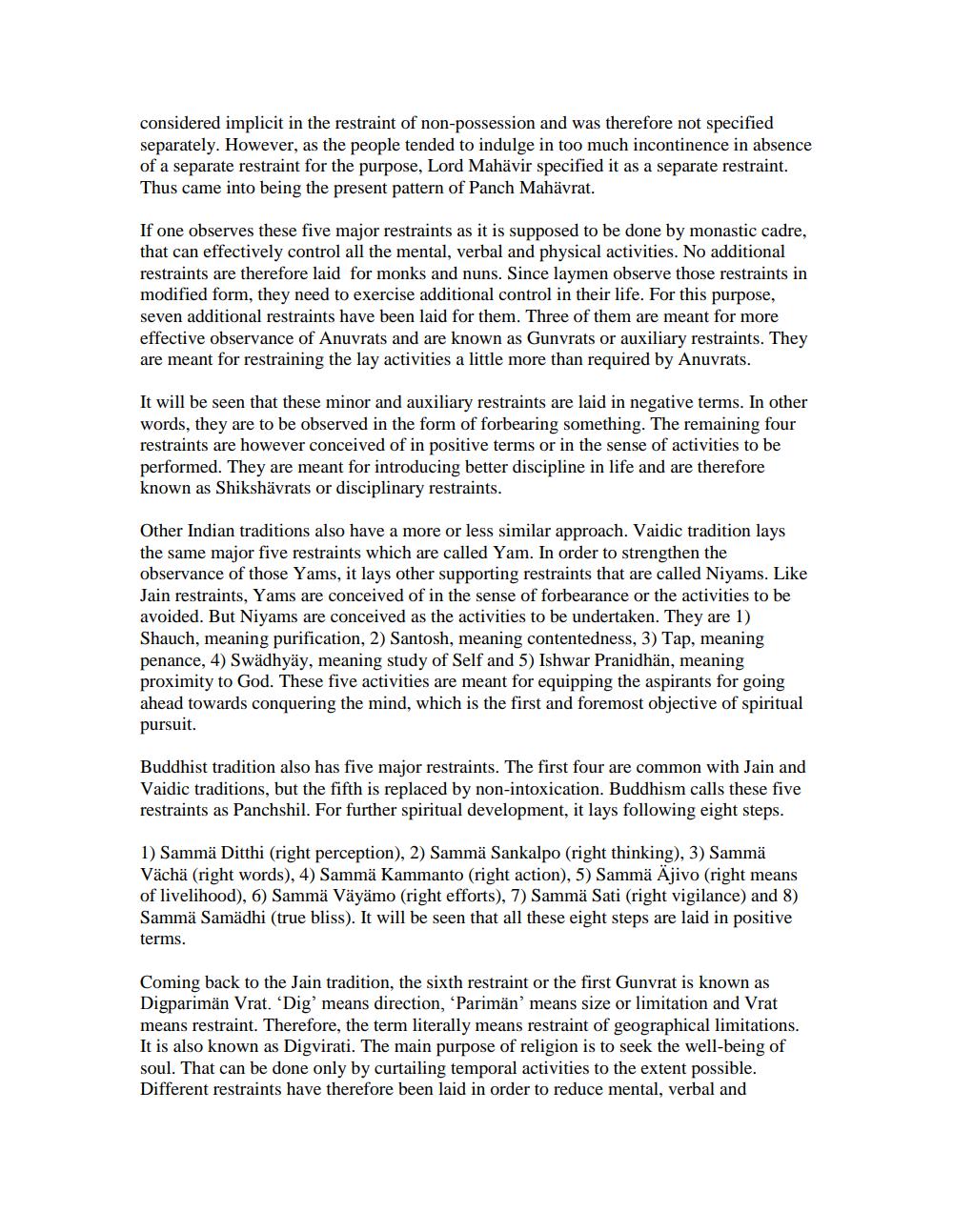________________
considered implicit in the restraint of non-possession and was therefore not specified separately. However, as the people tended to indulge in too much incontinence in absence of a separate restraint for the purpose, Lord Mahävir specified it as a separate restraint. Thus came into being the present pattern of Panch Mahävrat.
If one observes these five major restraints as it is supposed to be done by monastic cadre, that can effectively control all the mental, verbal and physical activities. No additional restraints are therefore laid for monks and nuns. Since laymen observe those restraints in modified form, they need to exercise additional control in their life. For this purpose, seven additional restraints have been laid for them. Three of them are meant for more effective observance of Anuvrats and are known as Gunvrats or auxiliary restraints. They are meant for restraining the lay activities a little more than required by Anuvrats.
It will be seen that these minor and auxiliary restraints are laid in negative terms. In other words, they are to be observed in the form of forbearing something. The remaining four restraints are however conceived of in positive terms or in the sense of activities to be performed. They are meant for introducing better discipline in life and are therefore known as Shikshävrats or disciplinary restraints.
Other Indian traditions also have a more or less similar approach. Vaidic tradition lays the same major five restraints which are called Yam. In order to strengthen the observance of those Yams, it lays other supporting restraints that are called Niyams. Like Jain restraints, Yams are conceived of in the sense of forbearance or the activities to be avoided. But Niyams are conceived as the activities to be undertaken. They are 1) Shauch, meaning purification, 2) Santosh, meaning contentedness, 3) Tap, meaning penance, 4) Swadhyäy, meaning study of Self and 5) Ishwar Pranidhän, meaning proximity to God. These five activities are meant for equipping the aspirants for going ahead towards conquering the mind, which is the first and foremost objective of spiritual pursuit.
Buddhist tradition also has five major restraints. The first four are common with Jain and Vaidic traditions, but the fifth is replaced by non-intoxication. Buddhism calls these five restraints as Panchshil. For further spiritual development, it lays following eight steps.
1) Sammä Ditthi (right perception), 2) Sammä Sankalpo (right thinking), 3) Sammä Vächä (right words), 4) Sammä Kammanto (right action), 5) Sammä Ajivo (right means of livelihood), 6) Sammä Väyämo (right efforts), 7) Sammä Sati (right vigilance) and 8) Sammä Samadhi (true bliss). It will be seen that all these eight steps are laid in positive terms.
Coming back to the Jain tradition, the sixth restraint or the first Gunvrat is known as Digparimän Vrat. 'Dig' means direction, 'Parimän' means size or limitation and Vrat means restraint. Therefore, the term literally means restraint of geographical limitations. It is also known as Digvirati. The main purpose of religion is to seek the well-being of soul. That can be done only by curtailing temporal activities to the extent possible. Different restraints have therefore been laid in order to reduce mental, verbal and




